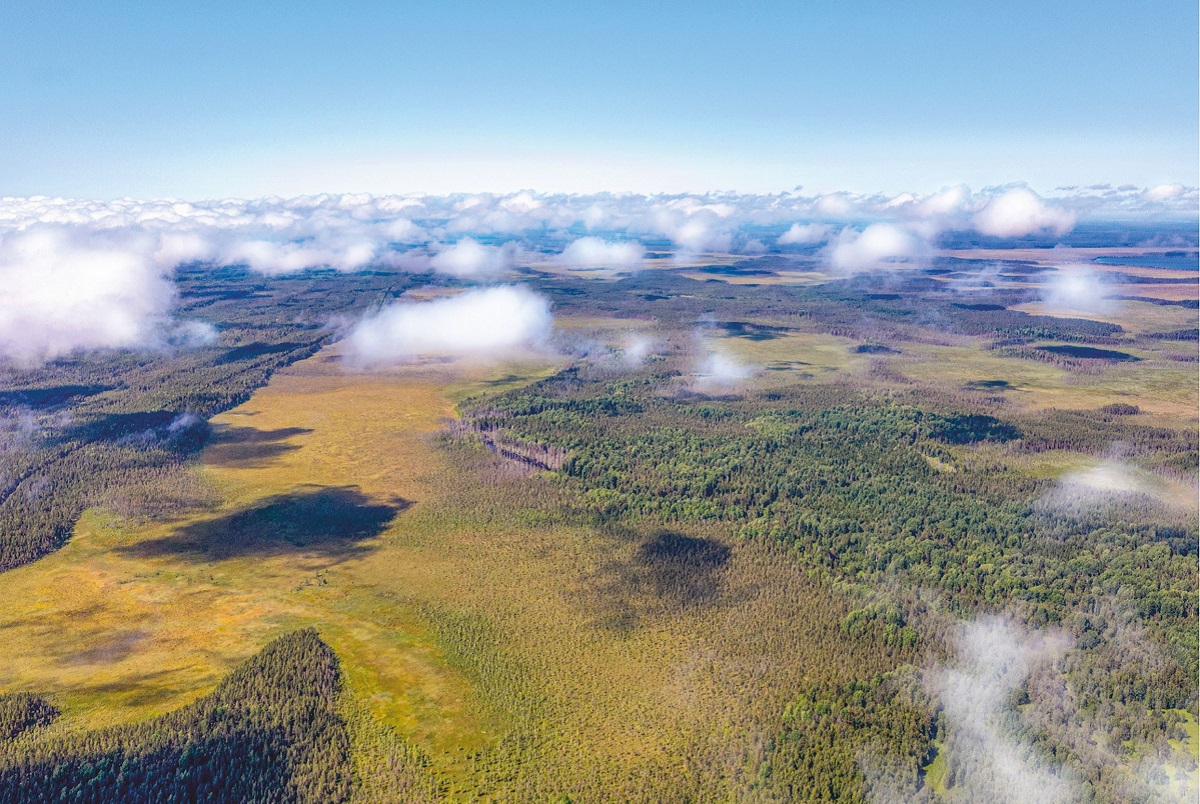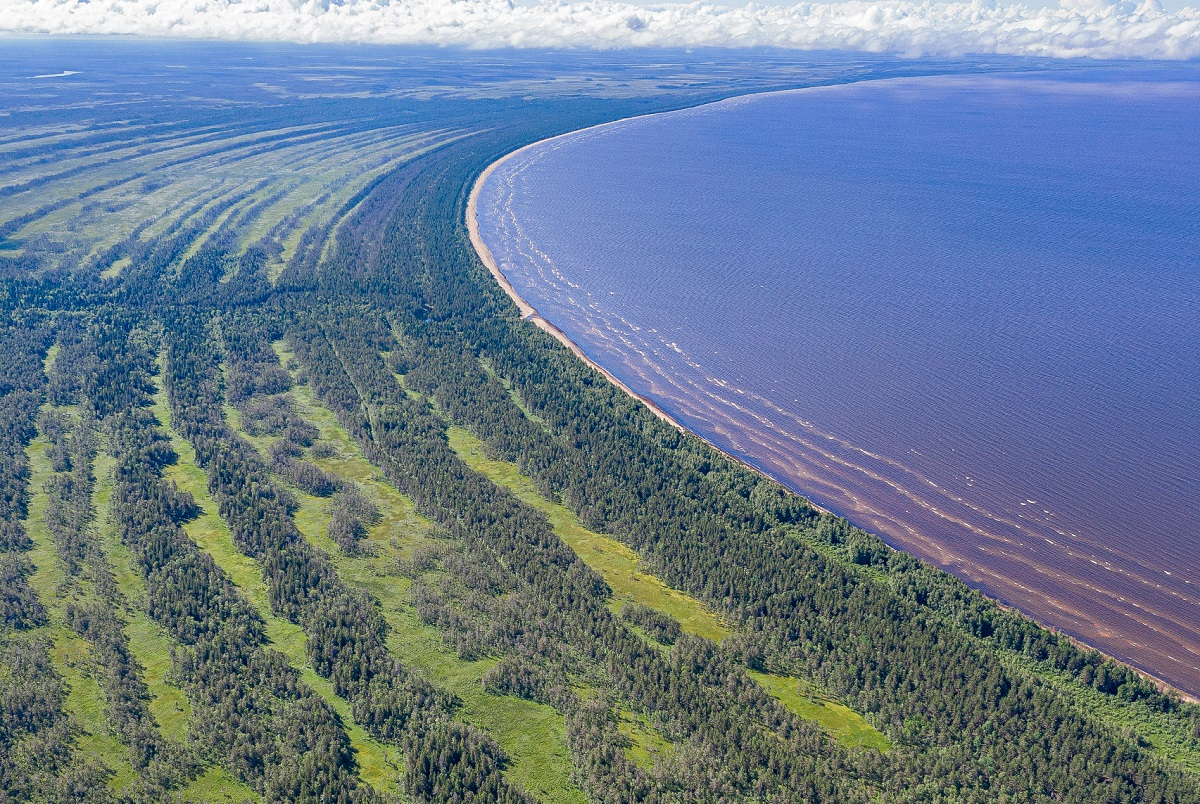The coast of Ladoga from a bird’s-eye view: an exhibition of photographs of the Nizhnesvirsky Nature Reserve is open at St Petersburg University

St Petersburg University has opened an exhibition of aerial panoramas of the Nizhnesvirsky Nature Reserve 'From the Height'. The quadcopter photos feature landscapes as they are seen by grey cranes and white-tailed eagles living in the Nature Reserve. You can admire the beauty of nature from an unusual angle
The Nizhnesvirsky Nature Reserve is located on the south-eastern coast of Lake Ladoga in the Lodeynopolsky District of the Leningrad Region. Its landscape is sandy coastal ramparts fringing the shores of Lake Ladoga. These ramparts were formed as a result of the shore line retreat in the postglacial era, swamps, dark coniferous spruce and small-leaved forests.
‘The exposition features the works depicting the Nizhnesvirsky Nature Reserve, its amazing landscapes and panoramas that you can see from the banks of the Svirskaya Bay. Such exhibitions remind us of our important mission: to protect nature and its unique natural monuments,' said Elena Lebedeva, Head of the St Petersburg University Research Support Service, during the opening ceremony. ‘Preserving the Reserve ensures that we can preserve the natural coastal landscapes of the ecosystem of ancient Ladoga.’ St Petersburg University is actively cooperating with the Nizhnesvirsky Nature Reserve, said Elena Lebedeva. Over the past 50 years, the University students and staff have been actively visiting the Ladoga Ornithological Station to make research inquiries into ecology and nature management.
Anna Ufimtseva, Head of the Department of Environmental Education of the Nizhnesvirsky State Nature Reserve, thanked the University for the opportunity to hold the exhibition at the University.
Being able to return to our alma mater is important for us, since many of the founders of the Nature Reserve worked, studied, or collaborated with the University. Little wonder, the main corridor of the Twelve Collegia building is an iconic place to show what has changed since the Nature Reserve was founded in 1980 and how it lives today.
Anna Ufimtseva, Head of the Department of Environmental Education of the Nizhnesvirsky Nature Reserve
The photos and images at the exhibition 'From the Height' were made from a quadcopter. Today, it is not just a new tool for the photographer to show us what the Earth looks like from a bird's-eye view, but also is a helping hand in solving research problems. As Sergei Kouzov, Senior Research Associate in the Department of Applied Ecology at St Petersburg University put it, how bird watchers who studied birds of prey or large birds nesting on the tops of trees were previously working was similar to mountaineering and required a lot of courage: to explore at least ten nests a day, you had to climb lots of trees. Tree climbing was strenuous and time-consuming. The trunks were often rotten.
Today, the situation is different. Scientists can lift the device into the air and see what is happening in the nest without doing harm to birds. They can even carry out some simple manipulations.
'Over 30 years having been engaged in the ecology of waterfowl in the eastern part of the Gulf of Finland and in other parts of Russia and seeing the increasing threats every year, I started to realise one important thing. We live in a responsible era, during which we must move to a new way of life, both economically and in terms of what attitude we have to our small planet Earth that has sheltered us,’ said Sergei Kouzov. 'We must harmonise our relationship with nature. This cannot be done without two things: changes in economic relations and, most importantly, in our minds. It will become the engine for solving all other problems.’
Sergei Kouzov said that at the beginning of his research activity, he was sure that toughening environmental laws and introducing strict punishments would help change the attitude of people towards nature. Yet Rustam Sagitov, who was Mr Kouzov’s research supervisor and founder of the Baltic Fund for Nature, had a different point of view. What we have to do is to popularise environmental knowledge among the public, including children.
At first, I did not believe that this could be effective. I thought that telling about nature was utterly useless when poachers went around and all living things died. Yet looking at how people are becoming more and more involved in nature conservation in Russia and beyond enabled me to understand that this was essential.
Sergei Kouzov, Senior Research Associate in the Department of Applied Ecology at St Petersburg University
'What we need to do is to show the beauty of our nature and to talk about the problems we have in relation to nature conservation. This will result in the increased number of interested people, and commissioned social services. We should popularise science and engage the public. Otherwise, we won’t succeed. I really appreciate what the Nizhnesvirsky Nature Reserve has been doing to popularise nature conservation,' said Sergei Kouzov.
After the opening ceremony, Anna Ufimtseva took the guests on a tour around the exhibition and talked about the uniqueness of the reserve landscape, animals that live in the protected area, and how birds are ringed.


